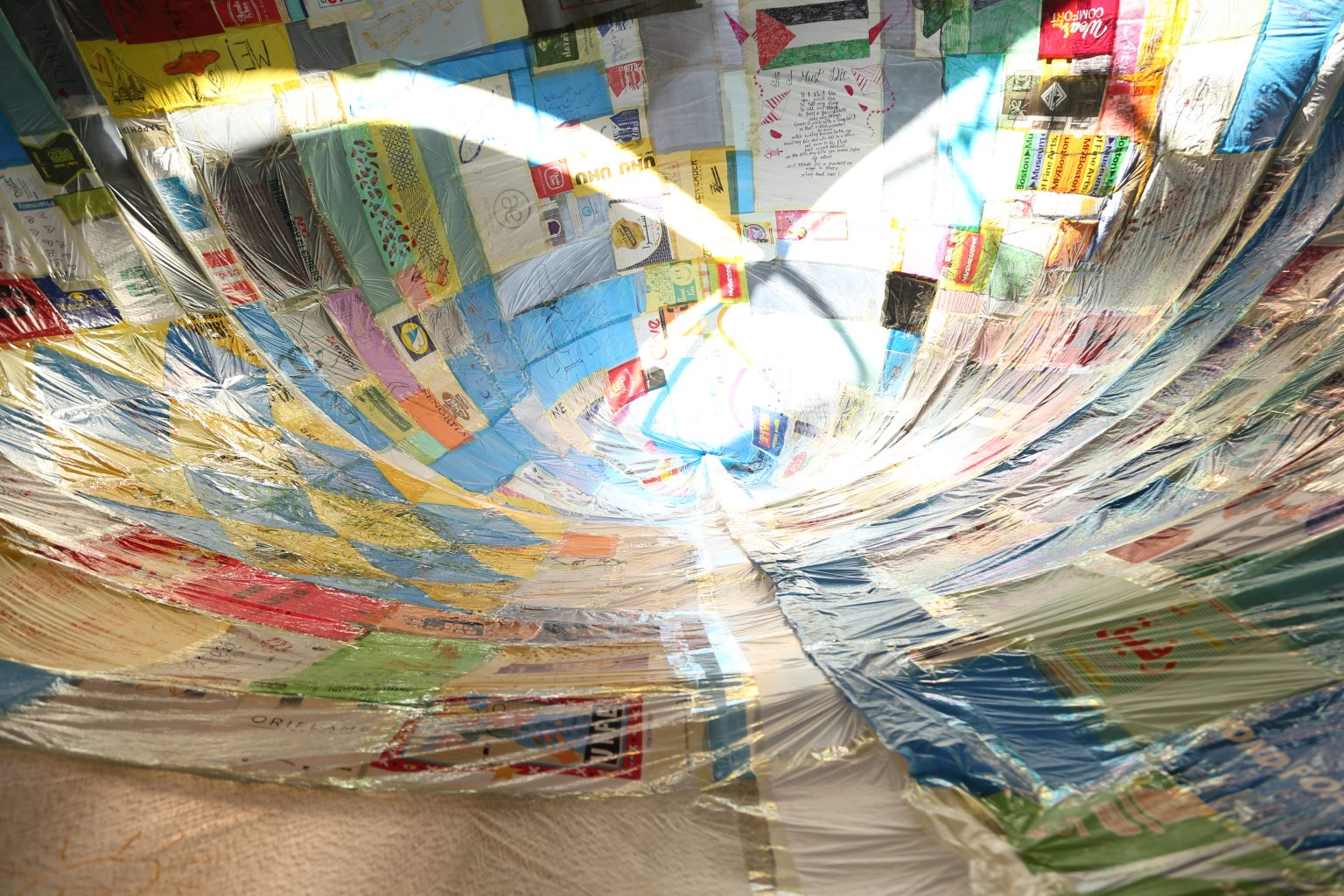Modern community art initiatives, like those at LB03, revive the inclusive essence of courtyard culture and fostering creativity through collective p
Modern community art initiatives, like those at LB03, revive the inclusive essence of courtyard culture and fostering creativity through collective participation.
Courtyard culture has deep roots in the South Asian subcontinent, playing a vital role in shaping social structures and community relationships over centuries. It allowed people to gather, socialize, and engage in shared activities like cooking, storytelling, rituals, and celebrations. This culture allowed for intergenerational interaction, where elders shared wisdom and cultural practices with younger generations. Today, in villages, courtyards play a crucial role in maintaining the social fabric. They serve as spaces for collective labor, such as processing food or making handicrafts, which can become a communal activity.
For the Lahore Biennale 03, titled “Of Mountains and Seas” we saw artists responding to the themes of ecology and sustainable futures, particularly for the South Asian societies. Two projects however, stand out as being imagined and created by a number of individuals coming together and working as a community; the Museo Aero Solar project displayed at Bradlaugh Hall and the WeMend by Womanifesto project displayed at the iconic YMCA on Mall Road.
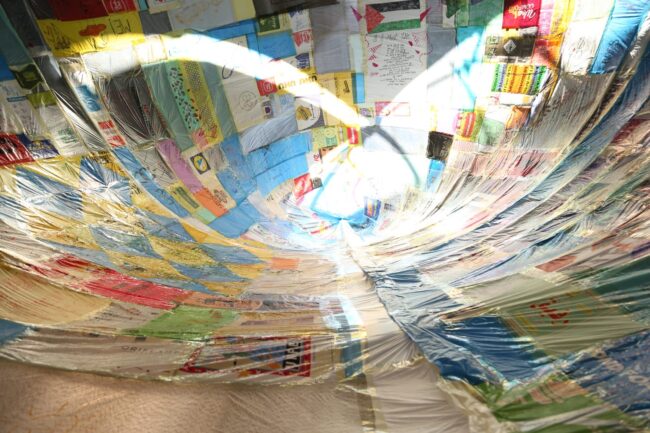
The concept of community art is rooted in the principles of cultural democracy, a belief that developed after the Second World War. Cultural democracy emphasizes the creation of culture and artistic expression by individuals and communities, rather than being controlled by centralized institutions. Its primary aim is to democratize cultural practices, creating a broader awareness and appreciation of art across diverse segments of society.
The Museo Aero Solar is a concept initially developed by an Argentinian artist, Thomas Saraceno in 2007 as an alarm for the damage caused to the environment by plastic bags and hence reclaiming them for community and art. The Kinnaird College for women were given to reiterate this project by the Lahore Biennale Foundation for the LB03. It started by the faculty of Fine Arts at Kinnaird College sending out emails and using word of mouth to collect waste plastic bags from people’s homes. Even though the collection process took time to kick off, slowly everyone around came in to donate once they realized the importance of this project as part of a clean air initiative. Tens of thousands of these plastic waste bags were collected to create this larger than life structure that is almost like an organism that breathes like a lung would. They began by laying these plastic bags flat to be stitched together. Sometimes, art is not about the final outcome but about the process. Students from the college would come together every day in the courtyard of Kinnaird College to sit and work together. What started out as an art project, steadily turned into a form of communal activity. Students were given the freedom to write/draw anything that highlighted their own South Asian identity onto these bags. Sitting down together every day not only proved to be a therapeutic session for everyone but also bought about a sense of achievement and ownership for the project. The collected bags, along with the intersection of art, mathematics and science were the converted into a larger than life sized, delicate and breathing tetrahedron that uses the air blown out from a mere fan to stand. As of now, it ages every day, repairs happen every day – just like human relationships tear and mend as they age.
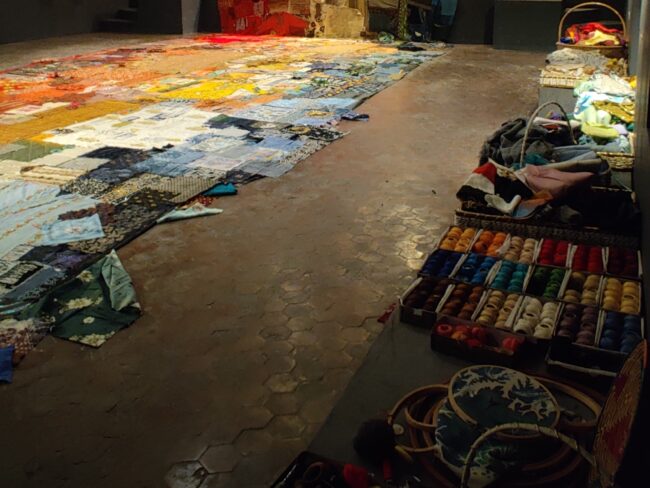
For LB03, students and faculty from MDSVAD, BNU, alongside artisans from Kaarvan Crafts Foundation and Baazyaft, collectively realized Womanifesto’s vision for WeMend, creating a unified communal social fabric. This project explores the concept of fabric as a representation of societal identity, structured around three core themes: “Who,” “Where,” and “Why,” each expressed through these distinctive visual sub-themes. ‘Fabric as Social Identity’ examines how textiles encapsulate a region’s heritage, history, and cultural narratives. Students and faculty bought in their old fabrics/garments – whatever pieces of cloth they could get and sat down to stitch as a community. Together, they created a 70 feet long fabric that is embroidered with tales and memories of anyone who made even a single stitch to it. The YMCA (Young Men’s Christian Association) in Lahore, serving as the project’s venue, embodies the city’s identity as a hub for creativity and inclusivity. It intertwines personal and political narratives, embracing a collective identity as Pakistanis that transcends divisions of race or religion.
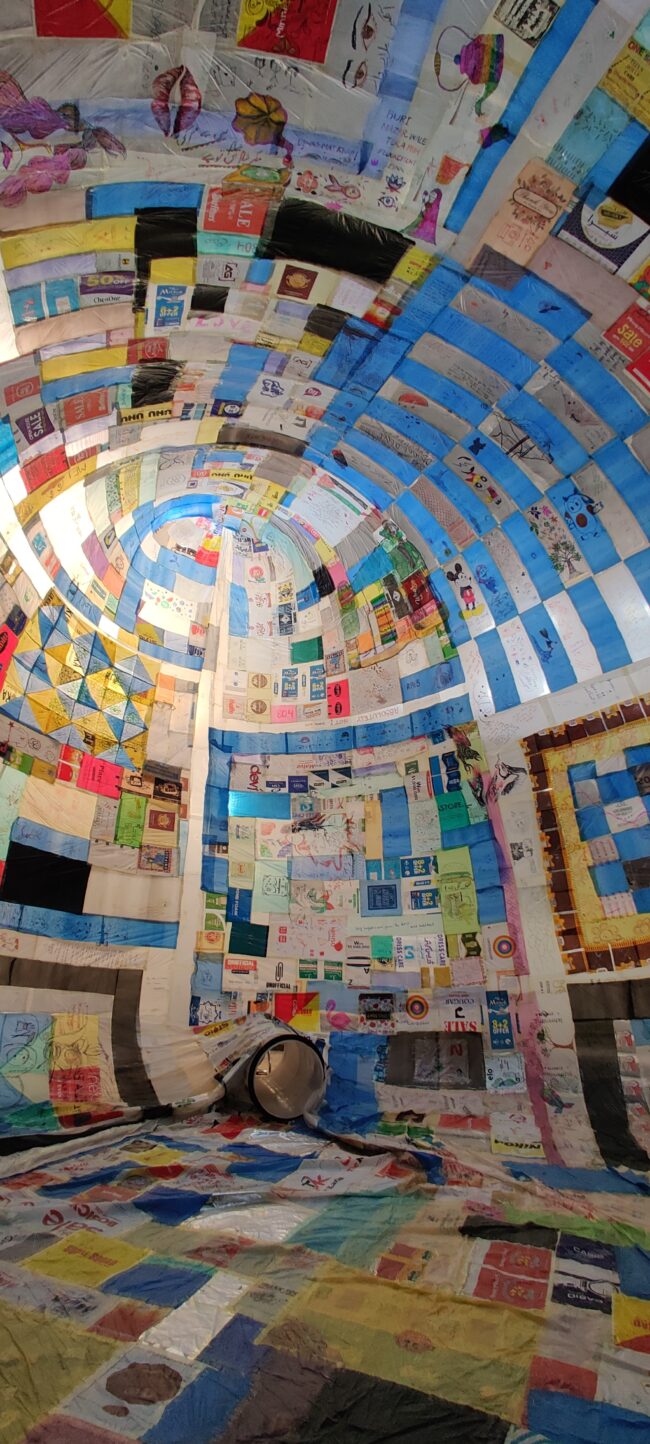
In many South Asian societies, the courtyard culture has historically been associated with women’s spaces, providing them a semi-private area for socializing, household chores, and leisure activities away from the public gaze. This aspect has contributed to the preservation of female-centric cultural practices, oral traditions, and informal networks of support. Interestingly, both these LB03 projects were female led as well as female students being a majority of the contributors.
“We did not realize the impact this project was creating. It was like activating a whole community we did not know could exist.” Says Mizna Zulfiqar, Head of the Aero Solar Project and head of the Fine Arts department at the Kinnaird College for Women. Similarly, Kiran Khan, the head of the WeMend project and the head of Department of Textiles, fashion and Accessories at BNU narrates, “It was so heartwarming to see the girls sitting down together as they brought pieces of fabrics and clothing, some of which we had our emotional attachments with as well, and sharing heartbreaks and life stories to seek comfort in each other. We saw many new bonds being created”
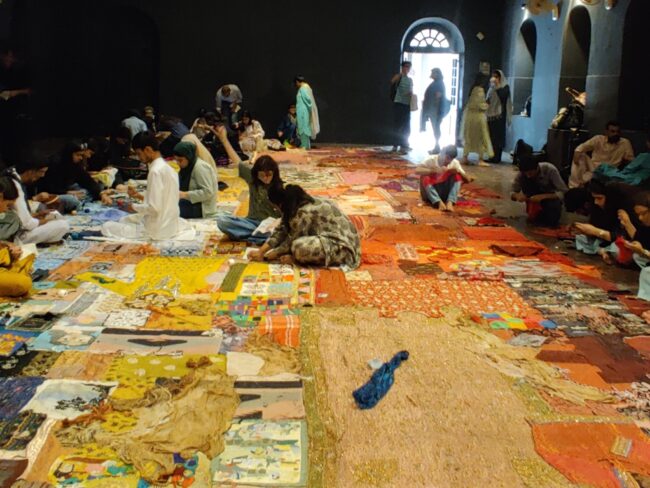
Modern community art initiatives often draw inspiration from the idea of courtyards as inclusive spaces. By creating public art in shared spaces, artists can evoke the spirit of courtyards—places where people from diverse backgrounds come together to engage in dialogue and cultural exchange and so has been achieved by the Lahore Biennale Foundation in commissioning these two projects for the LB03.
